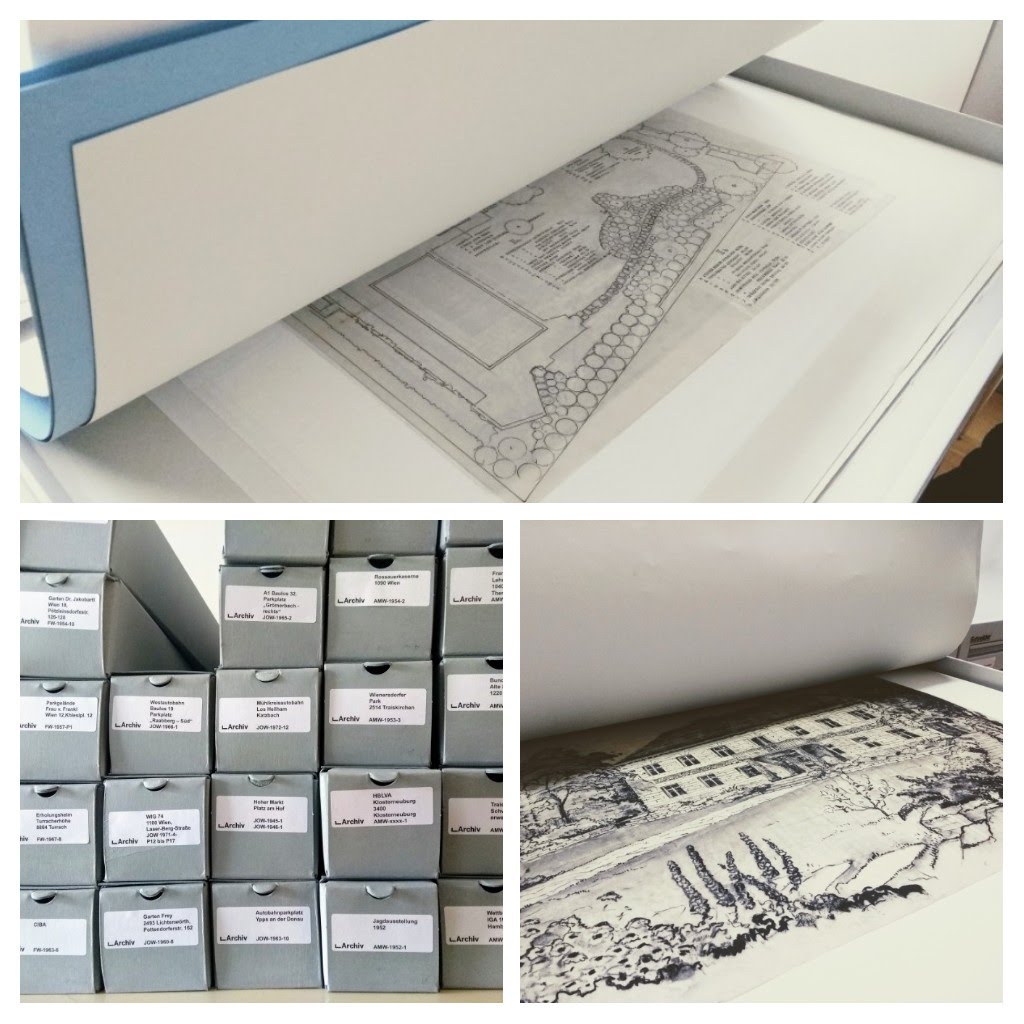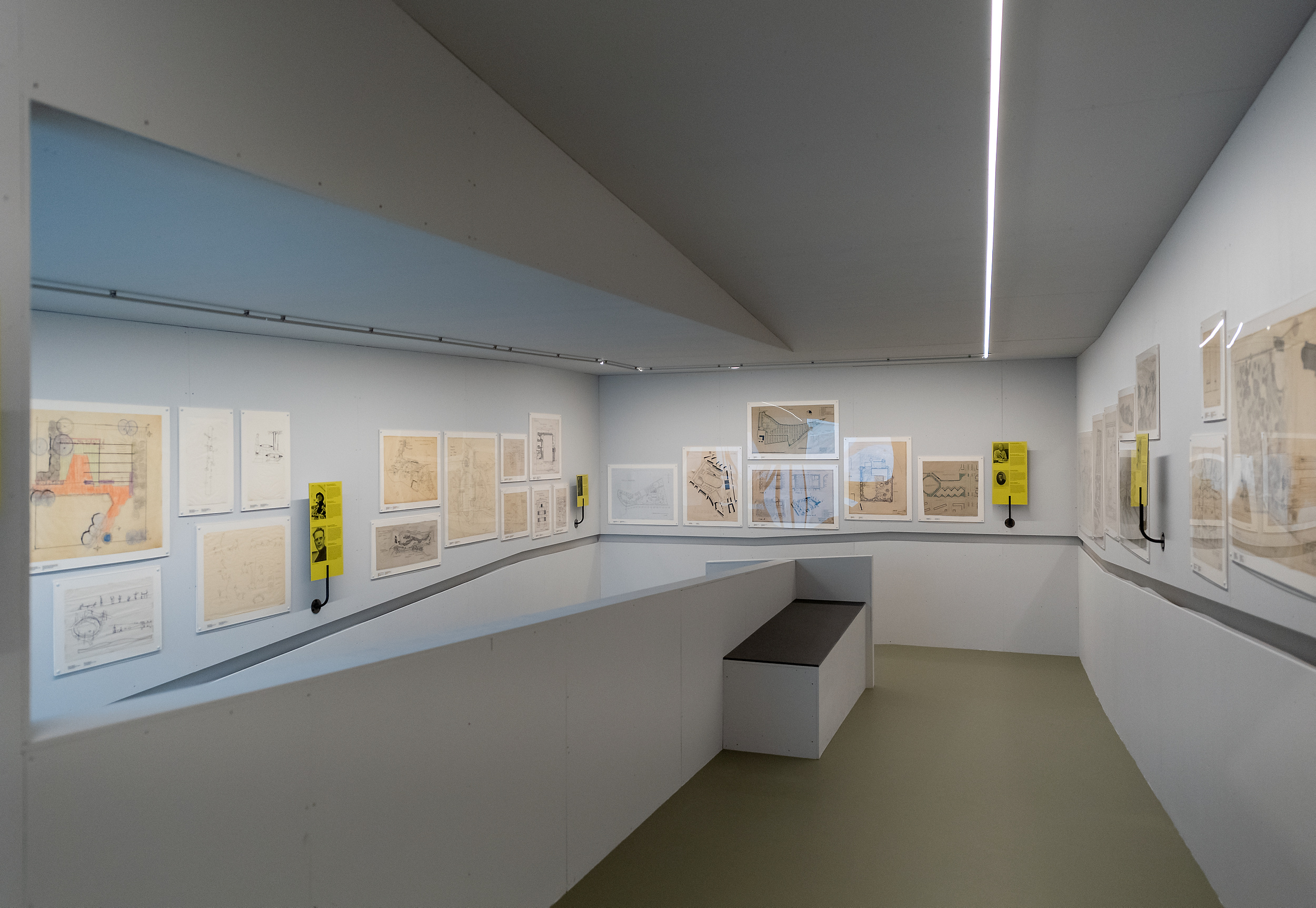European Network of Landscape Architecture Archives
A milestone event in the history of landscape architecture took place on 18 September 2019, when eight European landscape architecture archives joined forces to create an international network. The event took place in Ås as part of the ECLAS (European Council of Landscape Architecture Schools) Conference. The Network paves the discipline, which is now 100 years old, a historical foundation, where the future challenges and demands in research, teaching and design can be built upon.
The Archive of Norwegian Landscape Architecture (ANLA) in collaboration with the Archive for Austrian Landscape Architecture (LArchive) and the Archive of Swiss Landscape Architecture (ASLA) initiated the Network of the European Landscape Architecture Archives (NELA). The event was part of this year’s ECLAS Conference. In the workshop ‘An asset to education: Introducing archives of landscape architecture in academic education’, colleagues from Austria, Germany, Switzerland, Norway, France, UK, Belgium, Romania, Hungary and China discussed various topics, including the role of various thematic archives in landscape architecture discipline, areas of application for archival documentation, teaching methods and ways to encourage integrating archives into teaching and so on.
 Historical material is an Advanced tool for landscape architecture education (Illustration shows Archive of Swiss Landscape Architecture ASLA)
Historical material is an Advanced tool for landscape architecture education (Illustration shows Archive of Swiss Landscape Architecture ASLA)
Archives for Landscape Architecture are important for the future and innovation of the discipline. Apart from contributing to historical studies, historical material is also an advanced tool for landscape architecture education and triggers innovative teaching. An archive of Landscape architecture can help to understand the past in order to reflect on the actual situation as well as on further challenges. If we encourage students to use archives, it may increase the potential of them using such collections in their future careers (More about the importance of the archives see The Memory of a Discipline).
John Dixon Hunt states that landscape architecture lacks “serious or sustained interest in the history and theory of its field” (Hunt 2000). At the same time, for the self-understanding of a discipline, historical research plays a central role. There is an urgent need of developing a larger theoretical foundation for landscape architecture discipline. Archival material supports the understanding of “the conceptual principles of a profession” (Hunt 2000). Archives can be an integrated part of theory courses and help explain that design and planning approaches are dependent on a variety of factors, such as time and location. Students can understand the context of a design by drawing timelines and actively use historical material in theory building. In archives, students get an understanding of the complexity of styles and changes over time; Design processes can be analysed over a long-term span with all factors that are involved in such processes.
Historical drawings and projects can also be used in learning drawing techniques. In current courses the focus is mainly on digital tools and techniques. Other approaches are gradually disappearing. Historical drawing techniques provide alternative and creative presentation approaches. They give inspiration and even influence the design process itself. For example, students can be asked to colour black-and-white photocopied historical drawings, or copy original drawings with AUTOCAD (in their technical course ‘transfer hand-drawn designs into digital drawings’), or translate historical drawings into 3D models (Krippner; Lička; Wück 2019).

Historical Projects can be used in Learning drawing techniques (Impressions from Archive for Austrian Landscape Architecture LArchive)
Workshop outcome and further perspectives
The exchange with other European colleagues shows that the efforts of using an archive are strongly related to the degree of understanding the role of history and the importance of context and graphic communication. There is a persistent division between designing/construction and history/heritage, both in academia and in practice. Using archives in both sides can help to overcome this gap, by acknowledging a site’s historical context as well as reflecting on the practice today.
Apart from the contribution to landscape architecture discipline, archives are also meaningful to a borader audience. For example, archives can be read in a local or regional context; archives also help to build up a national history, by forming a basis for comparision among different countries. The recent exhibition ‘Outdoor Voices’ in National Museum-Architecture is such an example that revealed the archives’ historical values in general.
 The Archive room in the exhibition ‘Outdoor Voices’ with original documents from the Archive of Norwegian Landscape Architecture (National Museum Norway/Frode Larsen)
The Archive room in the exhibition ‘Outdoor Voices’ with original documents from the Archive of Norwegian Landscape Architecture (National Museum Norway/Frode Larsen)
The workshop states a clear need of teaching archival techniques for students, teachers and practitioners. Not only most of the students but also many practitioners lack the knowledge of reading archival material, which leads to insufficient understanding of the values of such sources. As a result, only a limited number of groups have used archival material in design projects. The participants of the workshop saw a great potential in raising awareness and enhancing knowledge in this field, and proposed several strategies. For example, in terms of how to develop more competence in landscape architecture teaching by involving landscape archives, following suggestions were proposed:
- Use the archive and archival material on different levels of education
- Use original material instead of digital images. This can make the learning process more effective and interesting.
- Diverse visual materials make learning less boring.
- Use materials of the everyday-landscape that students are familiar with (such as the university campus) to show the historical development of a landscape
- Combine archival work with field visits
The workshop concludes that the education in history of landscape architecture needs to be improved by enhancing the understanding of archives and benefit from using them. In the end of the workshop, NELA is announced to be established. It is a platform to exchange and cross-link information, and to generate new knowledge about Landscape architectural archives and their uses. In NELA, data and documents are expertly organized, stored, and made available to researchers, practitioners and the interested publics. We will share our experiences of working in the archives, so that our day-to-day work becomes easier and more effective. Publications and exhibitions are to be initiated to enhance the Network’s visibility in society, and to encourage the discipline’s communication to the public. The Network has also the goal of applying for funding for new research projects.
 NELA founding team at the ECLAS Conference 2019 in Ås, Norway
NELA founding team at the ECLAS Conference 2019 in Ås, Norway
Founders and members
The initiative for founding the Network came from the following archives and their members of staff:
LArchiv, Archive of Austrian Landscape Architecture / University of Natural Resources and Life Sciences (BOKU), Vienna
Lilli Lička, Ulrike Krippner, Roland Tusch, www.larchiv.at
ASLA, Swiss Archive at HSR Rapperswil
Hansjörg Gadient, Sophie von Schwerin, Simon Orga, www.asla.ch
ANLA Historical Archive of Norwegian Landscape Architecture, NMBU Ås
Annegreth Dietze-Schirdewahn, Bjørn Anders Fredriksen, http://blogg.nmbu.no/ila-samling
The network currently consists of eight Archives from Austria, Switzerland, Norway, the Netherlands, Germany, the United Kingdom, Hungary and Belgium. It is keen to include new members.
Contact person for NELA: Annegreth Dietze-Schirdewahn, annegreth.dietze@nmbu.no
References
Hunt, J.D (2000): Greater Perfections: The Practice of Garden Theory. University of Pennsylvania Press.
Krippner, U; Lička, L; Wück, R. (2019): Learning from history: integration an archive in landscape teaching In: Jørgensen, K; Karadenzi, N; Mertens, E; Stiles, R, Teaching Landscape: The Studio Experience, 214-225; Routledge , London.
